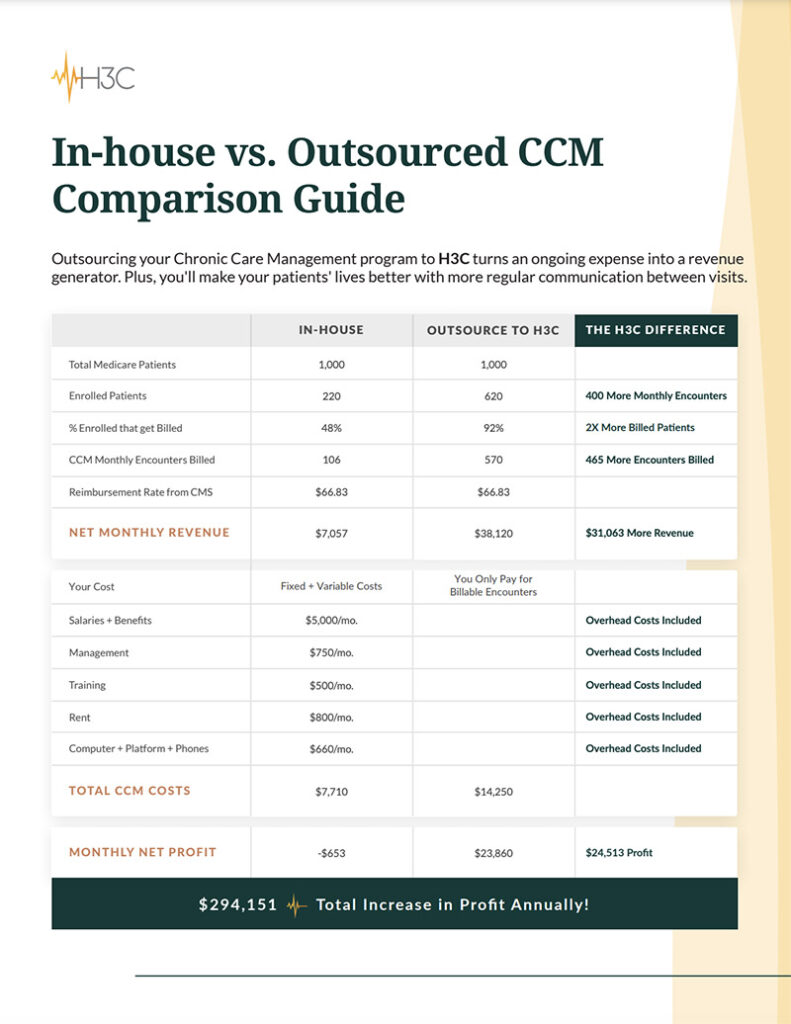Table of Contents
Managing chronic conditions extends well beyond the clinical exam room. Patients with multiple chronic conditions are especially vulnerable and their conditions require diligent adherence to prescriptions and medical plans.
Home treatment is not an easy process for many patients and that means they frequently drift away from adherence between physician visits. Patient engagement is an excellent tool for maintaining contact and reinforcing the medical plan.
What Exactly is Patient Engagement?
Engagement can happen using a variety of mediums like email, postcards, and phone calls. A real operator with a familiar and caring voice is the highest level of engagement short of physical visits.
The general goal behind engagement is to check up on patients, update their status and care plans, and remove barriers to care. Education is also a major facet of engagement and it serves to empower patients to be proactive rather than reactive when it comes to their health.
As most of us know, we tend to be proactive just before and after a doctor visit. As that time away from the doctor increases, slipping into old habits and losing track of the medical care plan is too easy. Engagement keeps the plan top of mind and helps patients hold themselves accountable between visits.
Here’s why engagement matters for chronic condition patients
Chronic conditions are unique in that they are always present. An infection will go away with treatment, a broken bone will eventually heal but chronic conditions persist and multiple chronic conditions can have a major impact on day-to-day life.
Treatment plans and medications can significantly improve the conditions and reduce impact but they often require very strict adherence. Being reminded about the care plan, medication requirements, and lifestyle recommendations helps to build consistency into the process.
Patients who are alone or don’t have anyone present to help with medical adherence are also more likely to care about their health when someone else is involved in the conversation. Just having that person on the phone who cares makes a huge difference in terms of motivation and accountability.
How can patient engagement outcomes improve conditions?
It takes more than just a phone call or email to deliver highly effective engagement. Automated follow-ups via email/text are one useful tool for clinics but implementing a full-fledged CCM program ensures patients receive high-level communication and education. Moreover, doctors and nurses gain real-time reporting with a partner like H3C because our integrations work within your EMR.
Sophisticated engagement can serve patient populations at scale, providing a larger and more effective footprint for improving conditions. It’s as simple as this: More engaged patients are more likely to follow care plans and take medications which leads to better health outcomes and maintenance of or improvement in their chronic conditions.
Here’s how those conditions can improve on the individual level and big picture level
Monitor and Track Goals
Physicians and nurses set goals and outline medical plans for chronic care conditions but they simply cannot be present to hold patients accountable at all times. Engagement makes it possible to track goals and progress for medication adherence, medical plans, diet, exercise, and more. The data gathered is fed directly to the physician and staff where they can review and modify goals and treatment as necessary.
Symptoms Analysis
Chronic conditions are not static and symptoms can change regularly. Stabilizing and minimizing symptoms is the goal and that requires data to guide medical plans. Monitoring and recording symptoms regularly leads to more accuracy and understanding of what is needed for treatment.
Trigger Physician Interventions
It’s surprisingly common for patients to ride out symptoms when they should seek treatment. They become conditioned to working through exacerbations or changes in condition and that makes it difficult to identify when they should actually be seeking help. By monitoring goals and tracking symptoms, engagement can identify these important moments and encourage office visits for physician intervention.
How can your healthcare system improve patient engagement?
Improving patient engagement can happen with internal processes like the aforementioned automated emails and text messages. Chronic Care Management (CCM) programs however are the holy grail of engagement for patients with two or more chronic conditions.
Funded within Medicare, clinics can utilize CCM outsourced partners like H3C to elevate impact via engagement. The programs even operate at a profit to the clinic. At H3C, we manage engagement through dedicated calls that help patients and physicians reach their goals together.
Are you ready to increase patient engagement and improve chronic condition outcomes for your patients? Get in touch with H3C to build a CCM program that supports your staff and patient population.
Portals implement better tracking systems that can trigger warnings and help guide better decisions based on patient progress.
Engaged patients are proactive and invested in their health plan. It doesn’t fall by the wayside and they have more discipline and accountability in the routine.
Better engagement increases adherence to medical plans and prescriptions. It has a positive impact on chronic condition management.
Communication through regular phone calls and checkups outside of office visits promotes positive patient outcomes.





